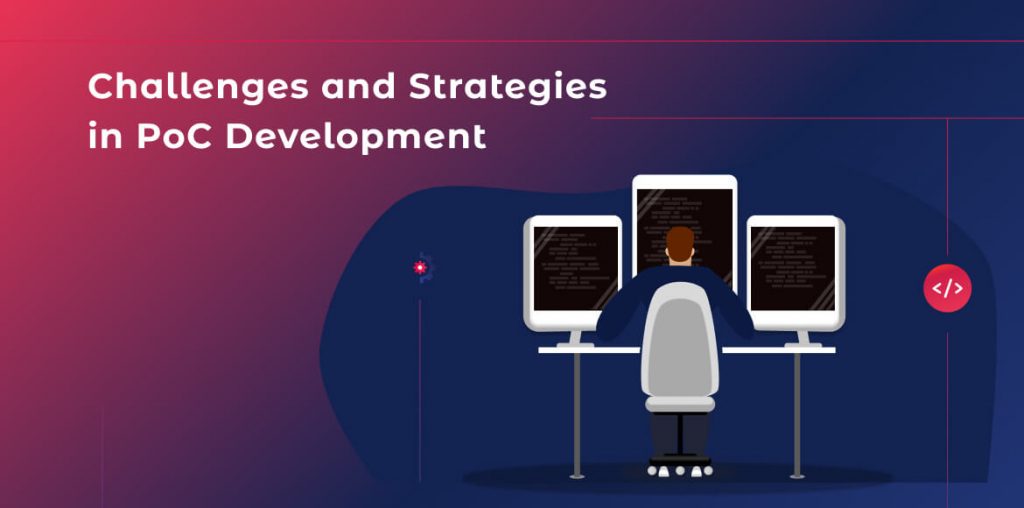Contents
Exploring the Power of PoC in Software Development
In the bustling world of software development, where ideas fly faster than light (well, almost!), how do you ensure your groundbreaking idea doesn’t just end up as a footnote?
Enter the Proof of Concept, the unsung hero that ensures your software idea doesn’t just sound good on paper but works in the real world too.
So, whether you’re a CEO looking for the next big thing, a developer itching to code, or a CTO ensuring everything runs smoothly, let’s dive deeper.
Understanding the Significance of PoC in Software Development
The Proof of Concept isn’t just a fancy term to impress at board meetings; it’s the backbone of innovative software development. By conducting a PoC, businesses can reap a plethora of benefits, from minimizing risks to ensuring the software aligns with the project’s objectives.

It is more than just a preliminary step in software development; it’s a strategic tool that offers a multitude of advantages:
- Risk Mitigation: Before pouring significant resources into full-scale development, a concept proof allows teams to test the waters, ensuring the idea is viable and feasible. This proactive approach can prevent costly mistakes down the line.
- Stakeholder Confidence: For stakeholders, seeing is believing. A PoC provides a tangible prototype they can interact with, bolstering their confidence in the project and potentially unlocking additional funding or resources.
- Technical Validation: Beyond the conceptual phase, the proof tests the technical aspects of a project. It ensures that the software solution is not only innovative but also technically sound, feasible, and scalable.
- Feedback Loop: A PoC isn’t just about validation; it’s also about iteration. By presenting a working prototype, teams can gather invaluable feedback from users, stakeholders, and developers, refining the product to better meet market needs.
Key Steps in Developing a Proof of Concept
Developing a PoC is a systematic process that involves several crucial steps:
- Defining Project Objectives: Clearly articulate what you aim to achieve. Is it to validate a new feature, test a novel technology, or perhaps demonstrate the feasibility of a disruptive idea?
- Research and Requirement Gathering: This involves understanding the market landscape, potential competitors, and the technical prerequisites. It’s about laying the groundwork based on solid data and insights.
- Designing Technical Architecture: Think of this as the blueprint of your PoC. It outlines how different components will interact, the technologies to be used, and the overall structure of the prototype.
- Implementation: This is where the rubber meets the road. Based on the design, the prototype is developed, ensuring it aligns with the defined objectives.
- Testing: Before presenting the PoC, it’s essential to test it rigorously, ensuring it functions as intended and meets the set criteria.
Testing a Proof of Concept: Best Practices and Considerations
Testing is not just about checking if it works; it’s about ensuring it meets the project’s objectives and is ready for potential scaling:
- Structured Testing Approach: Before diving into testing, define clear criteria. What are the expected outcomes? What benchmarks need to be met?
- Functionality Evaluation: At its core, does the concept proof do what it’s supposed to? This involves testing all its features and functionalities in various scenarios.
- Performance Testing: It might work well with ten users, but what about a thousand? Performance testing assesses how the prototype performs under stress, ensuring it’s scalable and responsive.
- Security and Compatibility Checks: In today’s digital age, security is paramount. Ensure the PoC is secure from potential threats. Additionally, check its compatibility across different platforms, devices, and browsers to ensure a wide reach.



Challenges, Strategies, and Successful Examples
The tech world is rife with stories of successful Proofs of Concept that paved the way for revolutionary products. Instagram began as a simple photo-sharing app, and its concept proof validated the market need for such a platform. Venmo’s proof demonstrated the demand for a user-friendly peer-to-peer payment system. These stories are just the tip of the iceberg that underscores the transformative power of a well-executed PoC.
While PoCs are invaluable, they come with challenges:
- Time Constraints: Developing a PoC can be time-consuming, especially when balancing other project aspects.
- Resource Limitations: Allocating resources can strain budgets, especially for startups.
- Technical Complexities: Ensuring it is technically sound can pose challenges, especially with evolving tech trends. Strategies to overcome these challenges include setting clear objectives, allocating resources wisely, and seeking expert guidance when needed.



Wrapping Up
In the dynamic realm of software development, the Proof of Concept stands as a beacon, guiding innovators from mere ideas to tangible results. It’s not just about validation; it’s about iteration, refinement, and ensuring that innovations truly resonate with the target audience.
As you embark on your next software venture, let the PoC be your trusted companion, ensuring your vision transforms into a reality that meets business objectives and market needs.
For those looking to delve deeper into the world of software development, exploring top software development companies in the US can provide valuable insights. Additionally, understanding how to effectively estimate projects can be crucial for successful project management and delivery.


